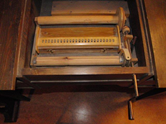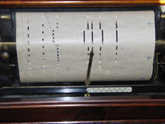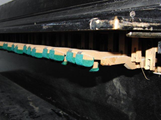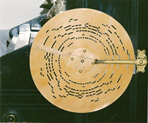In our collections, we have two main groups of musical automata – auto-pianos with rolls (hammers); and crank organs with discs (pump organs) or music rolls (without keyboard).
Although musical automata powered by clockwork had been around for several centuries, autopianos became common at the end of the 19th century. In these instruments, a mechanism is built into a ‘ordinary’ piano (that is, an instrument with hammers and a keyboard). This mechanism drives music rolls according to the punched card principle, so that the keys can “ghost play”. The music rollsmade in this way are valuable sounding documents in terms of playing technique and interpretation traditions. We therefore also have loose rolls for autopianos.
Another type of music machine is the “phonola” Klavier-Vorsetzer (also known as a dumb organist), which is placed in front of a grand piano. The mechanism here drives “mechanical fingers”, which play on the keys.
Automatic- or crank-organs are provided with discs of cardboard or metal, which are also punched according to the punch card principle (Ehrlich’s patent). Self-playing harmoniums without a keyboard are usually called organettes.
In Klaverens Hus, we have one that is built into a desk, hence the name “Harmonipulpet” (“HP”).



